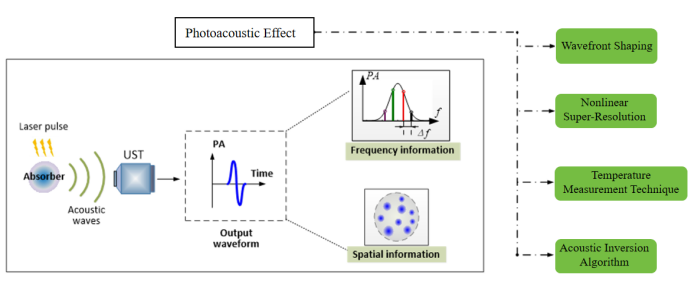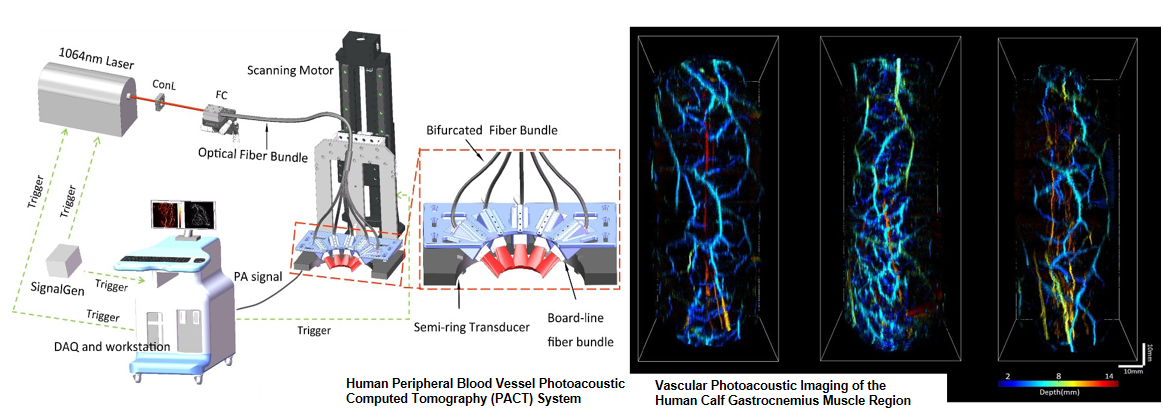Novel Theories and Methods in Photoacoustic Tomography

The generation of the photoacoustic effect involves multiple physical mechanisms, including photothermal conversion, heat conduction, thermoelastic expansion, pressure wave propagation, and temperature/ acoustic field distributions. Through the effective utilization and sophisticated manipulation of these physical mechanisms and phenomena, applications such as photoacoustic temperature extraction, super-resolution imaging, ultra-contrast imaging, photoacoustic-guided optical focusing, blood flow velocity measurement, and single-wavelength functional imaging have been realized, significantly expanding the scope of photoacoustic imaging technology. Meanwhile, the exploration of advanced imaging algorithms (e.g., virtual point synthetic aperture algorithm, deconvolution algorithm, forward projection, back-projection reconstruction algorithm, sound velocity compensation, filtered back-projection) has enabled super-resolution and deep-penetration photoacoustic 3D imaging, allowing photoacoustic imaging to achieve both "clearer visualization" and "deeper penetration." Currently, our laboratory is conducting research on novel theories and methods in photoacoustics from both physical mechanism and imaging algorithm perspectives. By improving the performance of photoacoustic imaging, we are actively expanding the application dimensions and scope of photoacoustic effects and technologies to drive further advancements in the field.
Photoacoustic Microscopy (PAM)
Photoacoustic microscopy technology enables label-free, high-resolution structural and functional imaging of living biological tissues using endogenous absorbers such as hemoglobin. It has been applied in multiple biomedical fields including neurology, ophthalmology, oncology, and dermatology. Our laboratory focuses on high-performance photoacoustic microscopy research, driving the advancement of this technology across three dimensions: equipment (high-speed, cross-scale, multi-modal systems), algorithms (signal denoising, image enhancement, vascular quantification), and applications (neurovascular coupling, tumor microenvironment analysis).

Photoacoustic Computed Tomography (PACT)
Photoacoustic computed tomography (PACT) offers advantages such as high safety, high resolution, large imaging depth, and real-time imaging capabilities. It provides critical information on biological tissue structure, function, and metabolism, and has been proven to have significant application value in multiple biomedical fields. Our laboratory is dedicated to developing novel photoacoustic computed tomography instruments and application algorithms. Currently, we have developed two systems focusing on photoacoustic imaging of human peripheral blood vessels and photoacoustic imaging of small animals, which are expected to achieve greater breakthroughs in the field of biomedical imaging and provide rich and valuable information for the diagnosis, treatment, and efficacy evaluation of related diseases.
